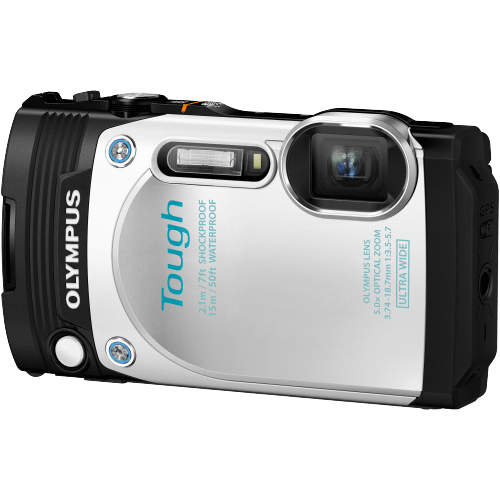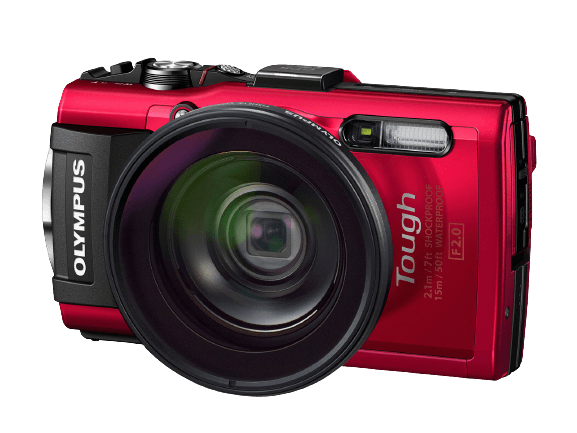Olympus Tough TG-870 vs Tough TG-4 Comparison
Olympus Tough TG-870

Olympus Tough TG-4

The Olympus Tough TG-870 edges out the Olympus Tough TG-4 with a score of 51/100 compared to 49/100. Both cameras are compact and were released in 2016 and 2015, respectively. The TG-870 is a more affordable option at $279, while the TG-4 was launched at $379. They share similar dimensions, with the TG-870 measuring 113 x 64 x 28mm and the TG-4 at 112 x 66 x 31mm. However, the TG-870 is lighter, weighing 221g, while the TG-4 weighs 247g.
The TG-870’s higher score and lower price make it a more appealing choice for consumers. Although the TG-4 may have its advantages, it is not reflected in the score. Ultimately, the Olympus Tough TG-870 stands as the better camera.
Olympus Tough TG-870 vs Tough TG-4 Overview and Optics
The Olympus Tough TG-870 narrowly wins in the optics comparison with a score of 53/100, while the Olympus Tough TG-4 scores 52/100. Both cameras share several common specifications, such as having 16 megapixels, a CMOS sensor, a TruePic VII processor, a DXOMARK score of 74 for the sensor, a 1/2.3″ sensor size, a fixed lens mount, and image stabilization.
The TG-870 edges out the TG-4 in terms of shooting speed, offering 7 frames per second compared to the TG-4’s 5 frames per second. This advantage allows the TG-870 to capture fast-moving subjects with more ease and precision, making it a better choice for action photography.
On the other hand, the TG-4 does not offer any significant advantages in optics over the TG-870. Both cameras have the same sensor type, processor, and image stabilization capabilities. The only difference is the slightly slower shooting speed of the TG-4, which may not be a deal-breaker for some users.
To conclude, the Olympus Tough TG-870 is the better camera in terms of optics primarily due to its faster shooting speed. The TG-4 does not offer any notable advantages over its counterpart. However, the difference between the two cameras is minimal, with only one point separating their scores. Users should consider their specific needs and preferences when choosing between the Olympus Tough TG-870 and the Olympus Tough TG-4.
Olympus Tough TG-870 vs Tough TG-4 Video Performance
The Olympus Tough TG-870 outperforms the Olympus Tough TG-4 in video capabilities with a score of 70/100 compared to the TG-4’s 57/100. Both cameras share some common specifications, such as Full HD maximum video resolution and 1920 x 1080 maximum video dimensions. Additionally, both cameras have time-lapse functionality built-in, allowing for creative video capture.
The TG-870 surpasses the TG-4 in terms of maximum video frame rate, offering 60fps compared to the TG-4’s 30fps. This difference means the TG-870 can capture smoother and more detailed videos, especially in fast-moving scenes or during action shots. This higher frame rate also allows for better slow-motion playback, providing more flexibility in post-processing and video editing.
On the other hand, the TG-4 does not have any significant advantages over the TG-870 in video capabilities. Both cameras share the same maximum video resolution, dimensions, and time-lapse functionality. The lower score of the TG-4 is due to its inferior maximum video frame rate.
Considering these points, the Olympus Tough TG-870 is a superior choice for those prioritizing video performance. Its higher frame rate allows for smoother and more detailed video capture, making it better suited for action and slow-motion shots. Meanwhile, the Olympus Tough TG-4 falls short in this aspect, offering no significant advantages over the TG-870. Therefore, the TG-870 is the clear winner in terms of video capabilities.
Olympus Tough TG-870 vs Tough TG-4 Features and Benefits
The Olympus Tough TG-870 emerges as the winner in the features comparison, scoring 54 out of 100, while the Olympus Tough TG-4 scores 49. Both cameras share several common specifications, such as a 3-inch screen size, the absence of a touchscreen, GPS, WIFI, and Bluetooth. However, there are differences between the two models that contribute to the TG-870’s higher score.
The TG-870 boasts a superior screen resolution of 921,000 dots, compared to the TG-4’s 460,000 dots. This higher resolution allows for a more detailed and clearer image display on the camera’s screen. Additionally, the TG-870 is equipped with a flip screen, which provides greater flexibility and convenience for capturing images at different angles. This feature is not present in the TG-4.
Although the TG-4 falls short in screen resolution and flip screen, it still shares essential features with the TG-870, such as GPS and WIFI, allowing for seamless geotagging and easy file sharing. The absence of Bluetooth in both models is not a significant drawback, as WIFI provides sufficient connectivity options for most users.
Considering the differences and similarities between the Olympus Tough TG-870 and the Olympus Tough TG-4, the TG-870 stands out as the better camera in terms of features. Its higher screen resolution and the presence of a flip screen give it an edge over the TG-4. However, the TG-4 remains a viable option for users who prioritize shared essential features, such as GPS and WIFI, over additional convenience provided by the TG-870.
Olympus Tough TG-870 vs Tough TG-4 Storage and Battery
The Olympus Tough TG-4 wins in the storage and battery category with a score of 21/100, compared to the TG-870’s score of 16/100. Both cameras share similarities, such as having one memory card slot and accepting SD, SDHC, and SDXC memory cards. Neither camera offers USB charging.
The TG-4 outshines the TG-870 in battery life and storage options. It delivers 380 shots per charge, thanks to its LI-92B battery, while the TG-870 provides 300 shots using its Li-50B battery. Additionally, the TG-4 has internal storage, giving users more flexibility.
However, the TG-870 has no significant advantages in storage and battery over the TG-4. The longer battery life and additional storage option make the TG-4 a more reliable choice for extended shooting sessions and versatile storage needs.
Olympus Tough TG-870 vs Tough TG-4 – Our Verdict
Are you still undecided about which camera is right for you? Have a look at these popular comparisons that feature the Olympus Tough TG-870 or the Olympus Tough TG-4:
